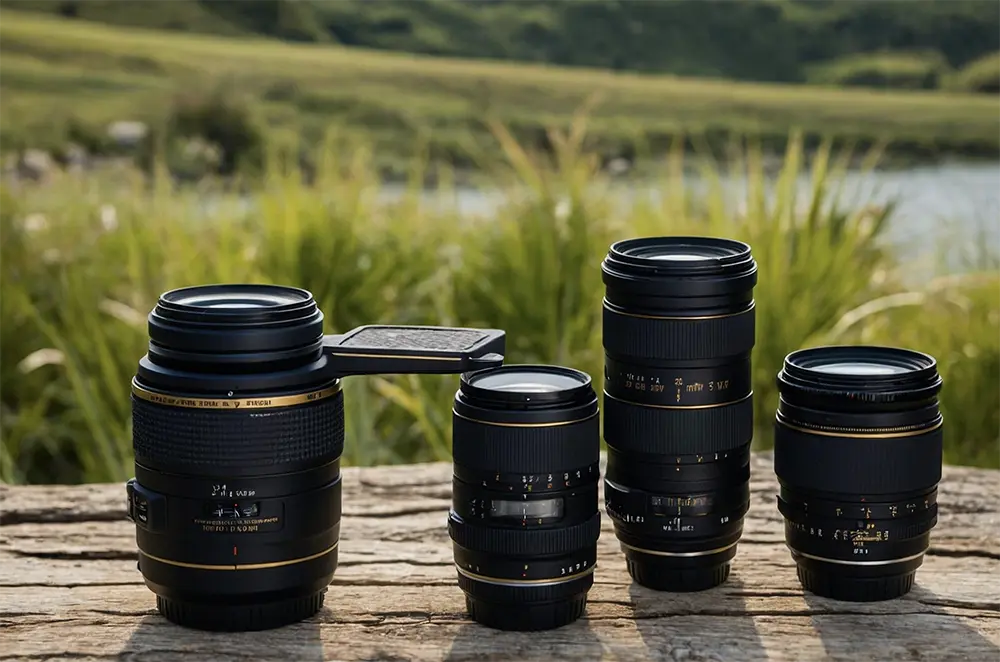
Product photography in 2025 demands more than just a good camera—it requires impeccable glass. Whether you’re shooting e-commerce jewelry, tech gadgets, cosmetics, or luxury goods, sharpness, color accuracy, and control over depth of field are paramount. Below is a curated list of the best lenses for product photography in 2025, catering to a variety of camera systems and budget levels.
1. Canon RF 100mm f/2.8L Macro IS USM (RF Mount)
Best for: High-resolution macro product photography (Canon RF system)
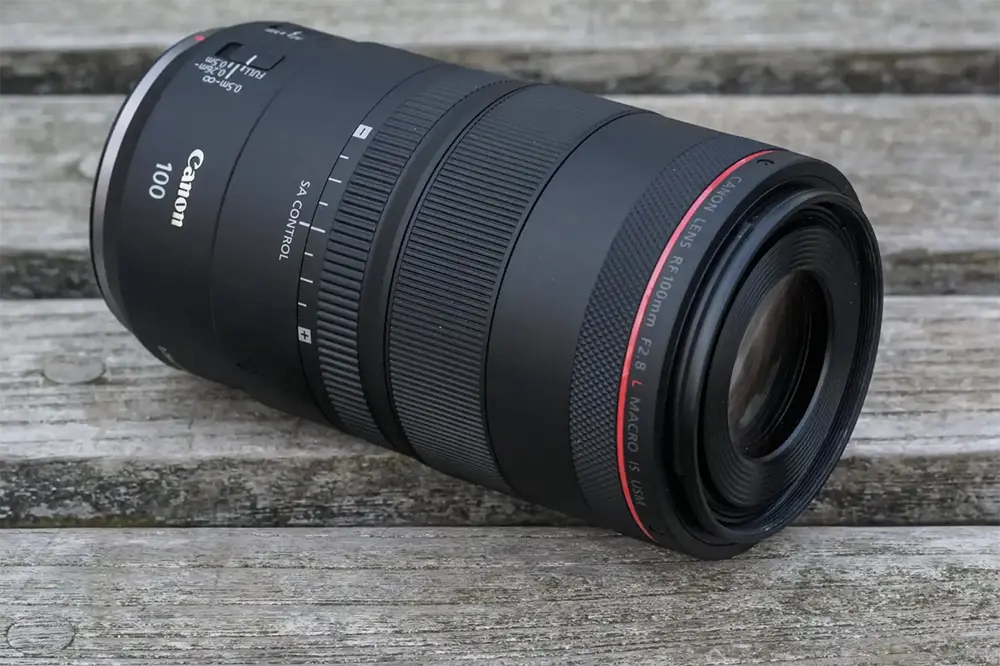
Lens Overview:
Canon’s RF 100mm f/2.8L Macro IS USM is a flagship macro lens offering stunning 1.4x magnification and hybrid image stabilization. In 2025, it continues to dominate as one of the sharpest and most versatile lenses for product photography, thanks to its optical precision and unique Spherical Aberration Control Ring.
Key Specs:
- Mount: Canon RF
- Maximum Magnification: 1.4x
- Image Stabilization: Yes, Hybrid IS (up to 5 stops)
- Minimum Focus Distance: 0.26 m
- Aperture Range: f/2.8 – f/32
- Weight: 730g
- Filter Size: 67mm
User Manual (Simplified):
Setup:
- Attach to any Canon EOS R-series body.
- Enable Focus Peaking for critical macro focus.
- Set the camera to aperture priority (Av) for depth control.
Macro Tips:
- Use a tripod for maximum sharpness.
- Engage Hybrid IS when shooting handheld.
- Use the Spherical Aberration Ring to creatively adjust background blur for mood and style.
Maintenance:
- Store with the lens cap and hood on.
- Use a rocket blower to remove dust from the front element.
- Avoid touching the internal focus barrel when extended.
2. Sony FE 90mm f/2.8 Macro G OSS (E-mount)
Best for: Sony full-frame macro product photography
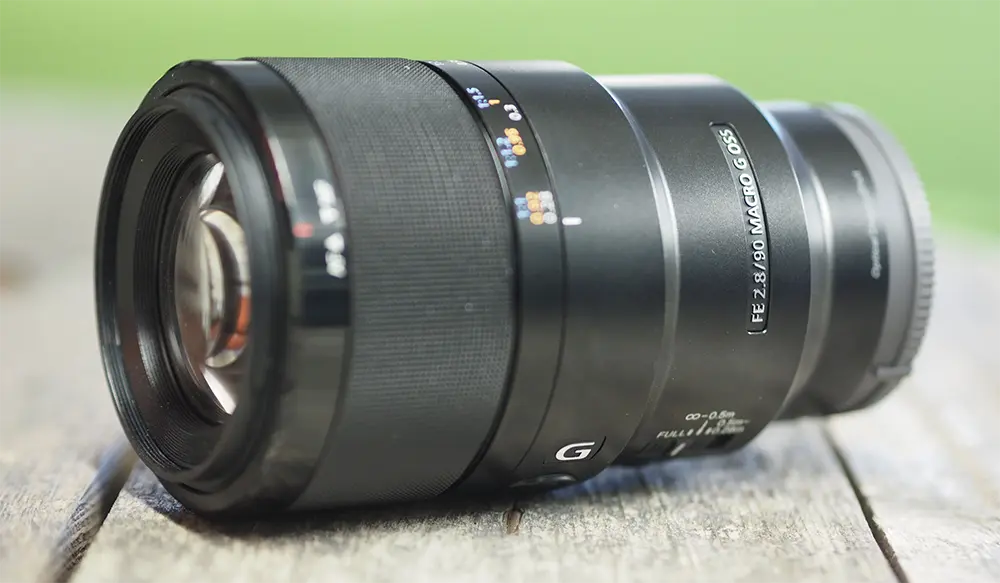
Lens Overview:
Sony’s 90mm f/2.8 Macro G OSS lens is revered for its razor-sharp optics, true 1:1 magnification, and Optical SteadyShot (OSS). It’s particularly effective for handheld macro shots, which is ideal when space or setup time is limited.
Key Specs:
- Mount: Sony E (Full-frame)
- Max Magnification: 1:1
- Image Stabilization: Yes (OSS)
- Focus Drive: Direct Drive SSM
- Minimum Focus Distance: 0.28 m
- Weight: 602g
- Aperture Blades: 9 (circular)
User Manual (Simplified):
Setup:
- Attach to any Sony Alpha mirrorless body (e.g., A7R V or A1).
- Use Manual Focus Assist and focus peaking.
- Use the AF/MF switch for flexible control.
Shooting Tips:
- Use OSS for handheld work.
- Shoot between f/5.6 – f/8 for maximum sharpness.
- For cosmetics or jewelry, try shooting at a 45° angle with bounce lighting for depth.
Maintenance:
- Clean rear and front elements with lens wipes.
- Keep firmware updated on your Sony body for best compatibility.
3. Nikon Z MC 105mm f/2.8 VR S (Z-mount)
Best for: High-end Nikon product macro photography
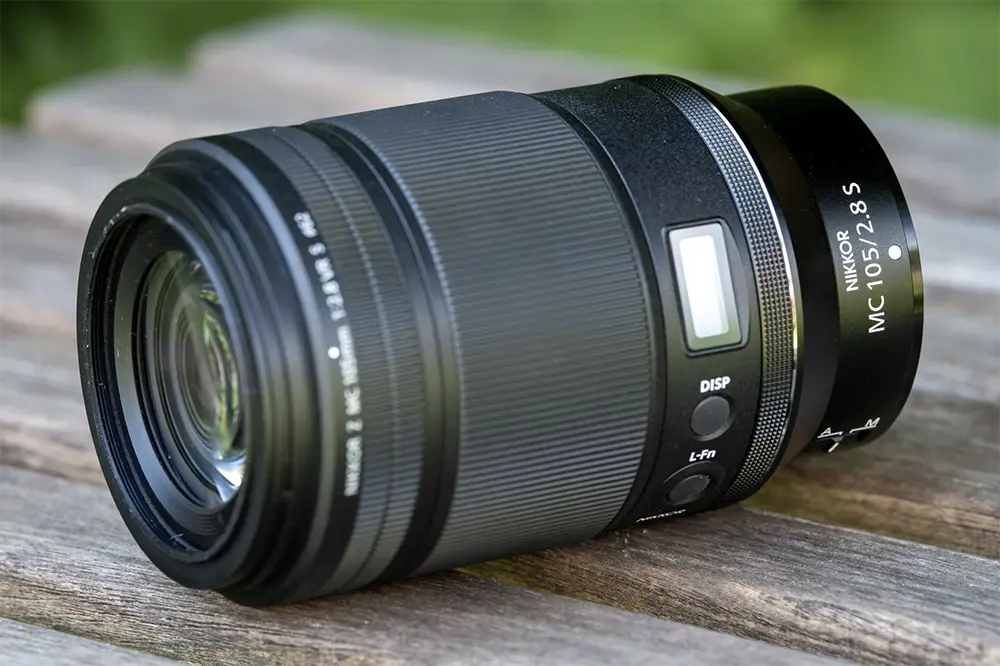
Lens Overview:
This lens delivers incredible sharpness, VR (vibration reduction), and nano crystal coatings for reduced flare. Ideal for both studio lighting and natural-light setups.
Key Specs:
- Mount: Nikon Z
- Max Magnification: 1:1
- Minimum Focus Distance: 0.29 m
- Aperture: f/2.8 – f/32
- Image Stabilization: Yes
- Weight: 630g
User Manual (Simplified):
Setup:
- Use with Nikon Z7 II, Z8, or Z9 for best results.
- Activate focus peaking and set manual focus for precision.
Shooting Suggestions:
- Best aperture: f/8 for maximal sharpness.
- VR helps reduce shake, but a tripod is always recommended.
- Shoot raw to preserve Nikon’s native color science.
Care Instructions:
- Store in a dry cabinet.
- Don’t use canned air to clean the front element—use a blower instead.
4. Sigma 70mm f/2.8 DG Macro Art (Available for EF, E, L Mount)
Best for: Budget macro product shooters and Sigma Art fans
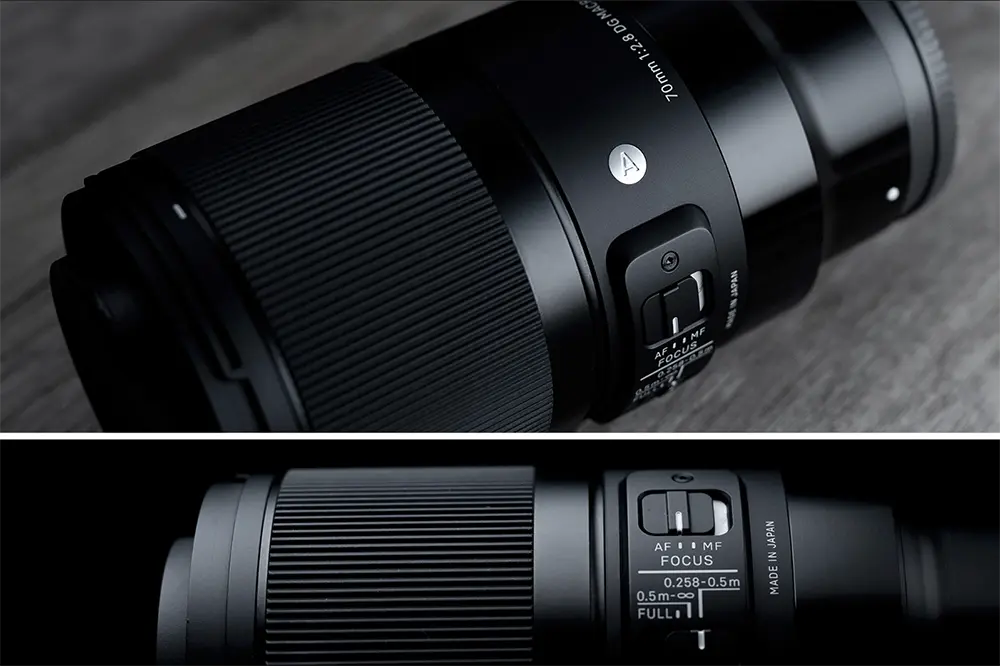
Lens Overview:
A sleeper hit among professionals, this lens offers elite-level sharpness at a budget-friendly price. Available in Canon EF, Sony E, and L-mount (Panasonic/Leica).
Key Specs:
- Mounts: EF, E, L
- Max Magnification: 1:1
- Focus Type: Focus-by-wire (manual recommended)
- Aperture Range: f/2.8 – f/22
- Weight: 515g
User Manual (Simplified):
Setup:
- Attach to compatible camera with Sigma’s USB Dock for firmware updates.
- Use manual focus with focus peaking.
Tips:
- Best used with controlled studio lighting.
- Use f/5.6 for crisp product shots.
- Compact size makes it easy for overhead flat lays.
Maintenance:
- Regularly check for front element smudges.
- Clean with a microfiber cloth gently from center to edge.
5. Fujifilm XF 80mm f/2.8 R LM OIS WR Macro (X-Mount)
Best for: APS-C shooters and detail-rich e-commerce photography
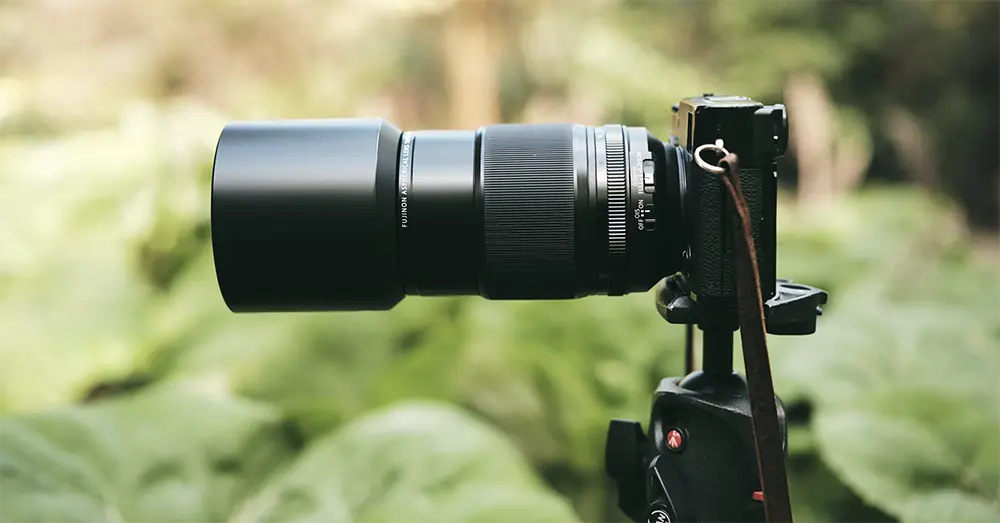
Lens Overview:
This is the sharpest lens in Fuji’s X-mount lineup. It delivers 1:1 macro with a 120mm equivalent field of view. Perfect for isolated object photography or fine texture detail.
Key Specs:
- Mount: Fujifilm X
- Max Magnification: 1:1
- Aperture: f/2.8 – f/22
- OIS: Yes (Optical Image Stabilization)
- Weather Resistant: Yes
- Weight: 750g
User Manual (Simplified):
Setup:
- Use with X-T5 or X-H2 for maximum resolution.
- Use a tripod for absolute clarity.
Recommendations:
- OIS helps, but turn off stabilization if using a tripod.
- Use f/8 for texture-rich items like leather, fabric, or watches.
- Pair with continuous lighting for constant exposure control.
Maintenance:
- Weather-sealed, but still store with silica gel packs.
- Periodically inspect for moisture around focus rings.
6. Laowa 100mm f/2.8 2X Ultra Macro APO (EF, RF, Nikon F/Z, E, L Mounts)
Best for: Super-macro and creative product detail work
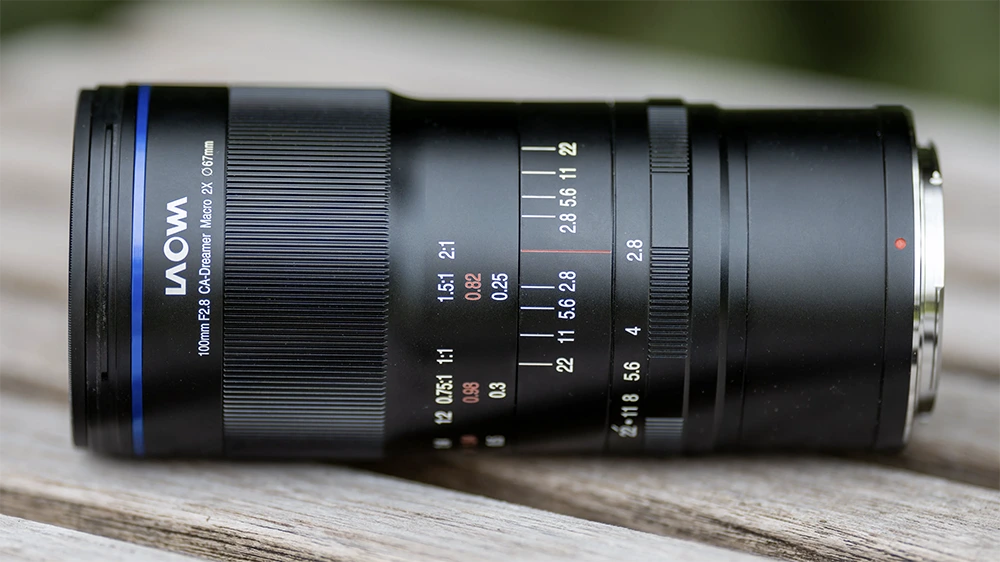
Lens Overview:
A manual focus macro lens offering 2:1 magnification without distortion. Laowa’s color rendering and edge-to-edge sharpness make it beloved among macro purists.
Key Specs:
- Mounts: RF, EF, Nikon F/Z, E, L
- Max Magnification: 2:1
- Focus: Manual only
- APO Design: Virtually no chromatic aberration
- Aperture: f/2.8 – f/22
User Manual (Simplified):
Setup:
- Use on mirrorless with focus peaking.
- Stabilize with a macro rail system for precise focus stacking.
Macro Techniques:
- Use in controlled environments with consistent light.
- Shoot tethered for precision.
- Ideal for shooting micro-details: circuit boards, luxury watch mechanisms, etc.
Maintenance:
- As it’s fully manual, mechanical wear is possible—handle the focus ring gently.
- Protect the APO lens elements with UV filter caps.
7. Panasonic Lumix S 100mm f/2.8 Macro (L-Mount)
Best for: Lightweight macro for Panasonic/Leica shooters
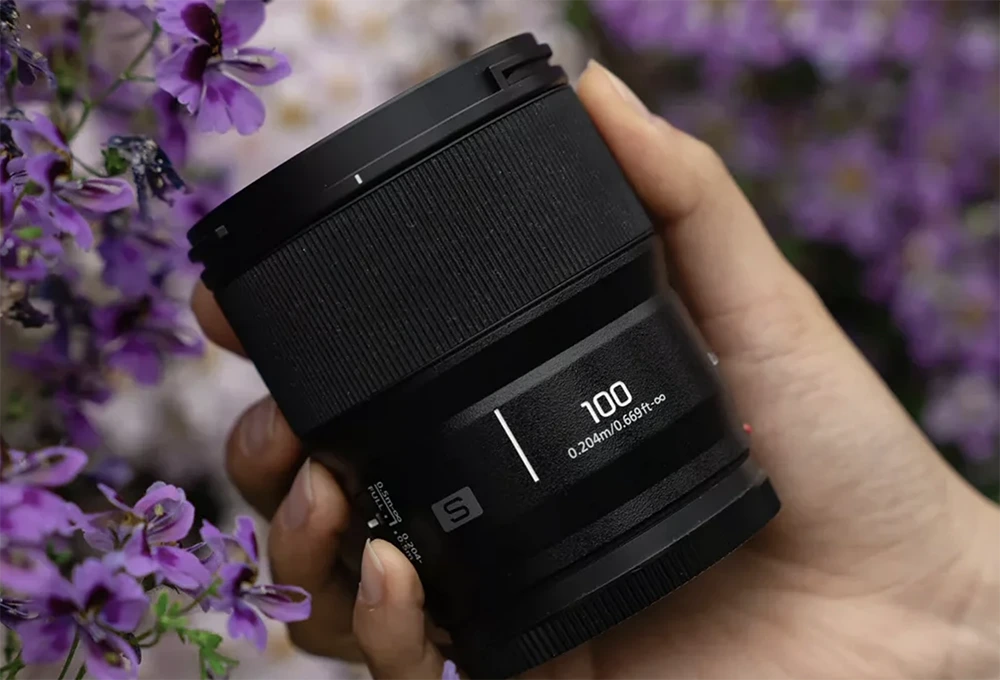
Lens Overview:
Launched in late 2024, this macro lens is the lightest full-frame 100mm macro lens, perfect for hybrid creators using Panasonic S5II or Leica SL2-S.
Key Specs:
- Mount: L-Mount
- Max Magnification: 1:1
- Aperture: f/2.8 – f/22
- Weight: 298g
- Filter Thread: 67mm
User Manual (Simplified):
Setup:
- Update camera firmware for best compatibility.
- Use focus magnification + peaking when shooting static subjects.
Best Practices:
- Because it’s light, it’s great for gimbal use in hybrid video/still workflows.
- Shoot at f/8 for full product clarity.
- Use in combination with Lumix LUTs for clean color rendering.
Care Tips:
- Lightweight construction—avoid knocks.
- Clean with the lens pen for smudge-free close-ups.
8. Zeiss Milvus 100mm f/2M ZF.2/ZE (Nikon F/Canon EF)
Best for: Premium manual-focus sharpness and studio rigs
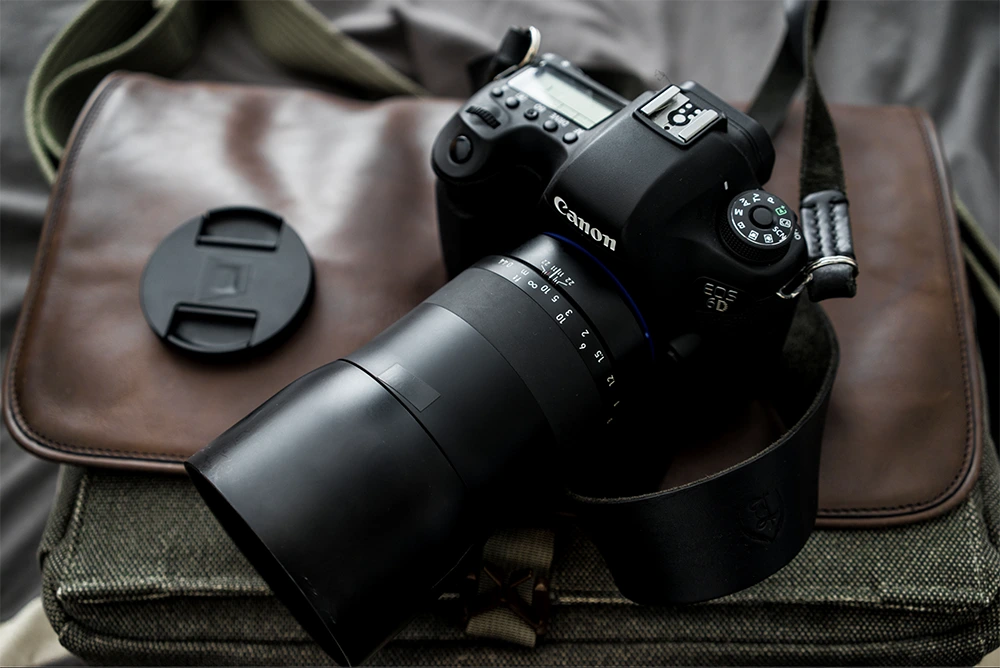
Lens Overview:
A manual-focus masterpiece from Zeiss, this lens is known for its microcontrast and color fidelity. Preferred by high-end commercial product photographers.
Key Specs:
- Mounts: Canon EF, Nikon F
- Magnification: 1:2
- Aperture: f/2 – f/22
- Construction: All-metal
- Weight: 921g
User Manual (Simplified):
How to Use:
- Mount on DSLR or mirrorless via adapter.
- Manual focus only—use rails and tethered Live View for accurate results.
Ideal Applications:
- Controlled studio product shots.
- Print media-grade fidelity.
- Use f/5.6 – f/11 for consistent edge-to-edge sharpness.
Care Instructions:
- Store in a padded case due to weight.
- Periodically lubricate focus ring if it becomes stiff over time.
Buying Tips for Product Photographers
Look for:
- Macro capability (1:1 or greater)
- Low distortion and edge-to-edge sharpness
- Color neutrality
- Focus reliability (manual or autofocus)
- Stabilization if handheld shooting is frequent
Avoid:
- Zoom lenses with variable aperture
- Non-macro primes unless you shoot flat lays or large objects
Final Thoughts
The art of product photography lies in revealing the tiniest details with elegance. Whether you’re photographing minimalist tech or intricate handmade jewelry, the lens is your ultimate interpreter. In 2025, macro and short-telephoto primes remain the kings of this genre. Pick a lens that matches your system, lighting setup, and desired workflow—your portfolio will thank you.


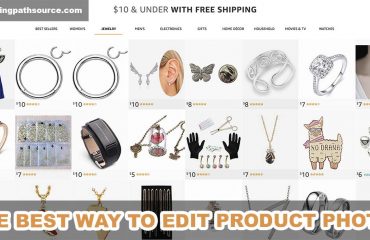
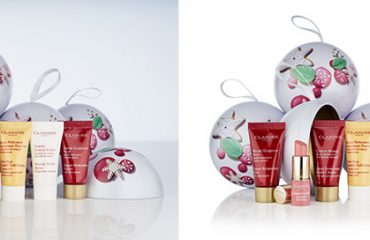
You must be logged in to post a comment.